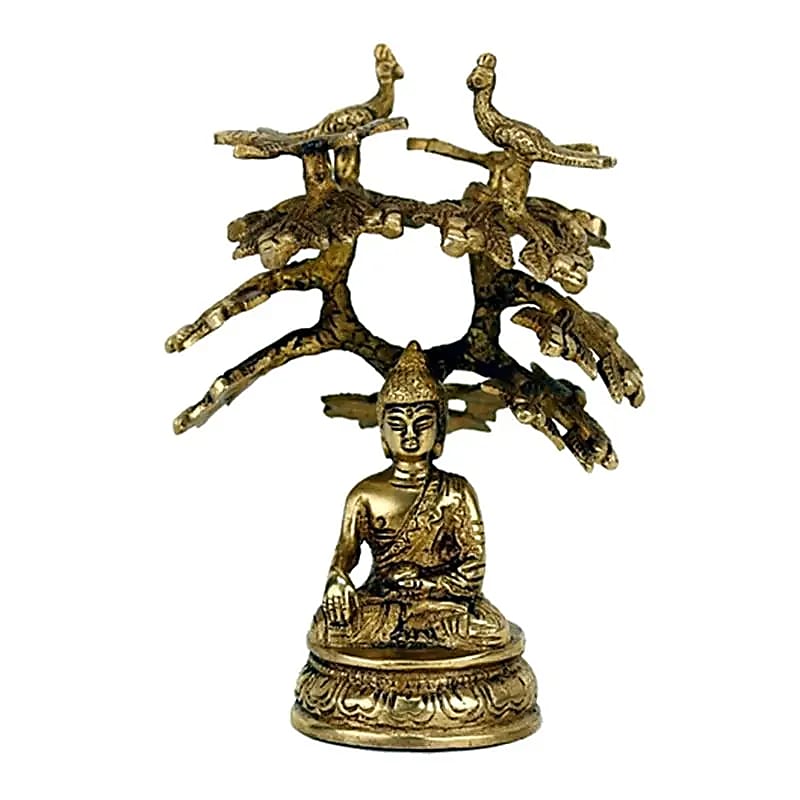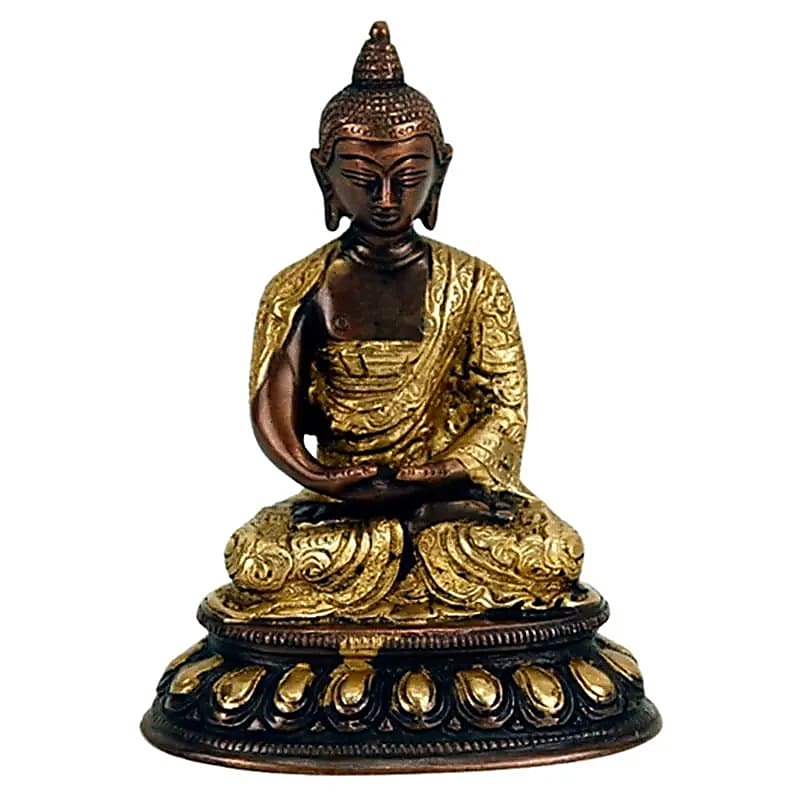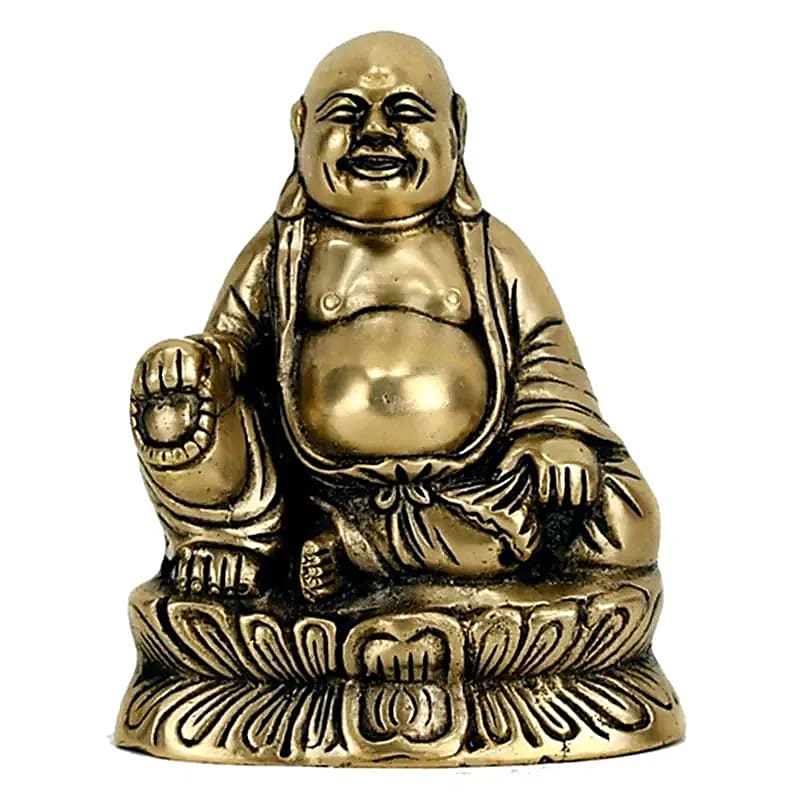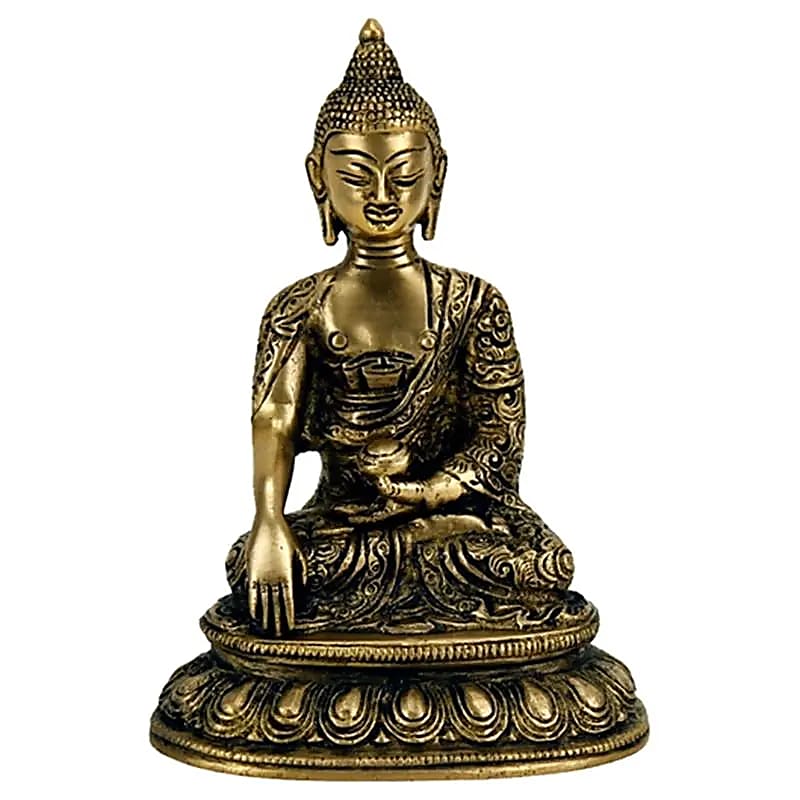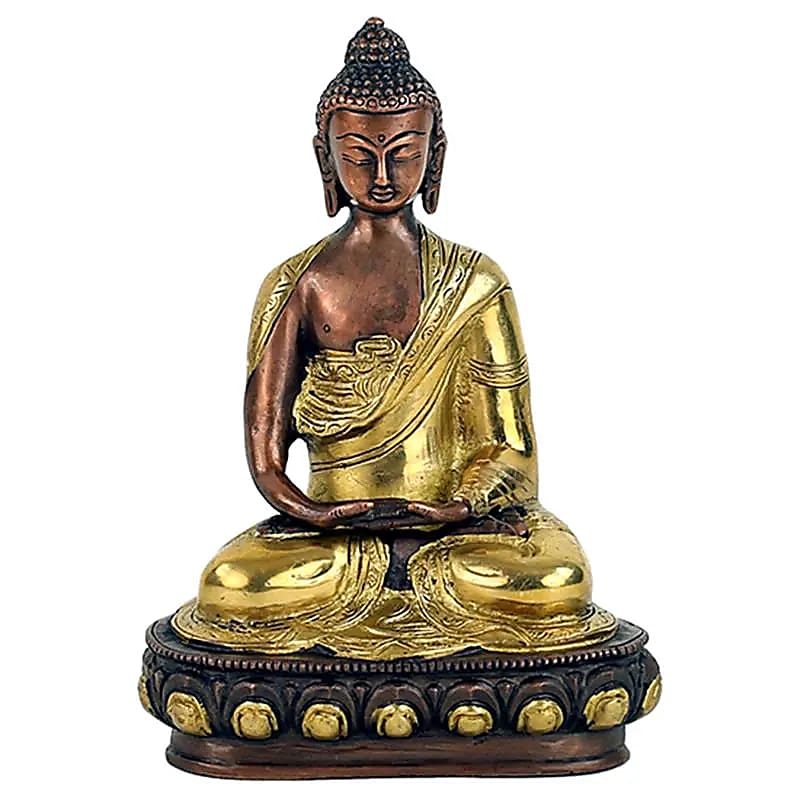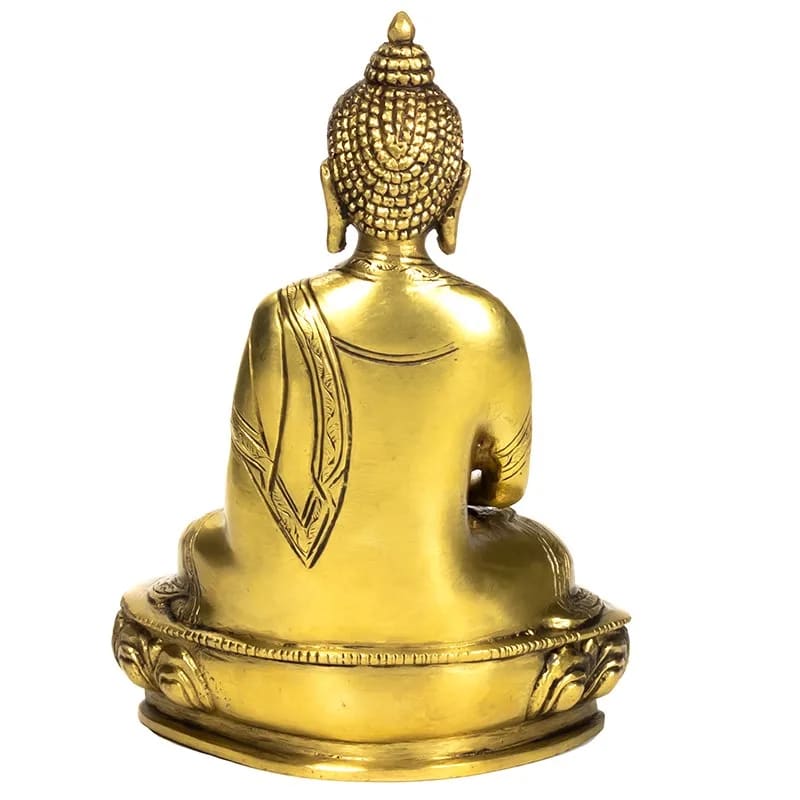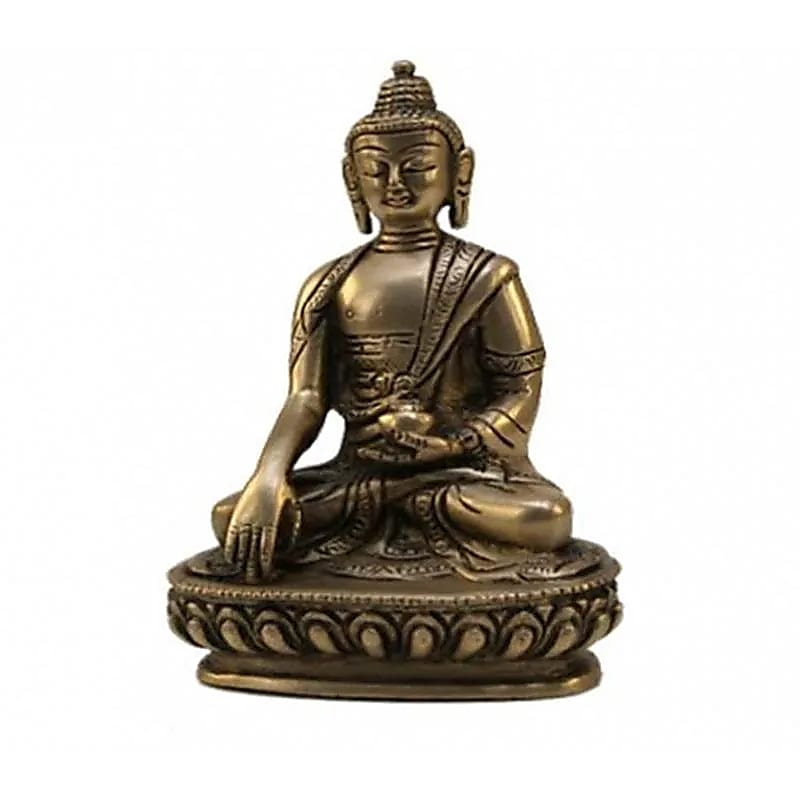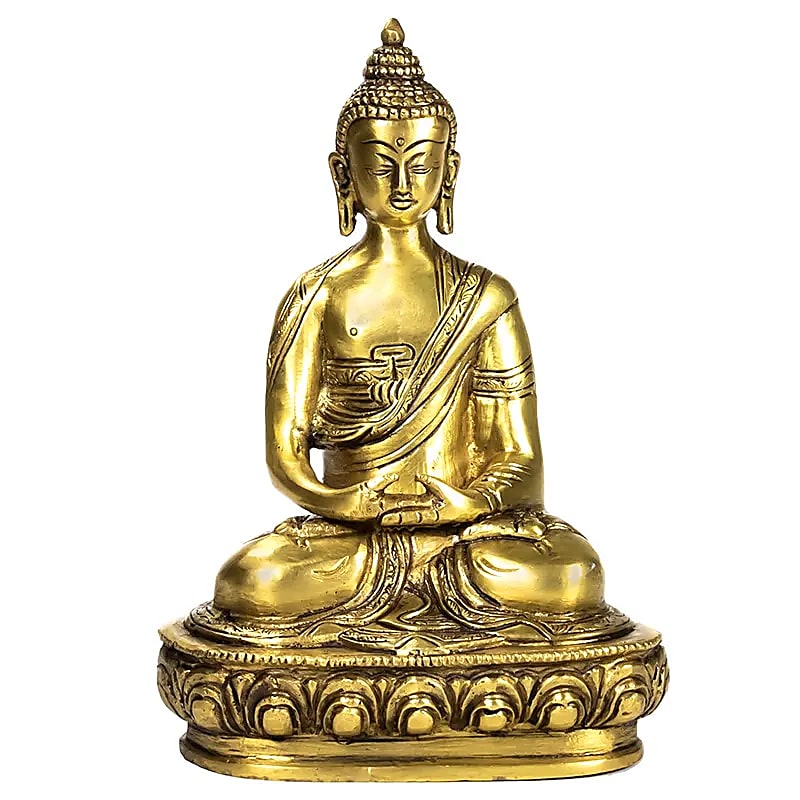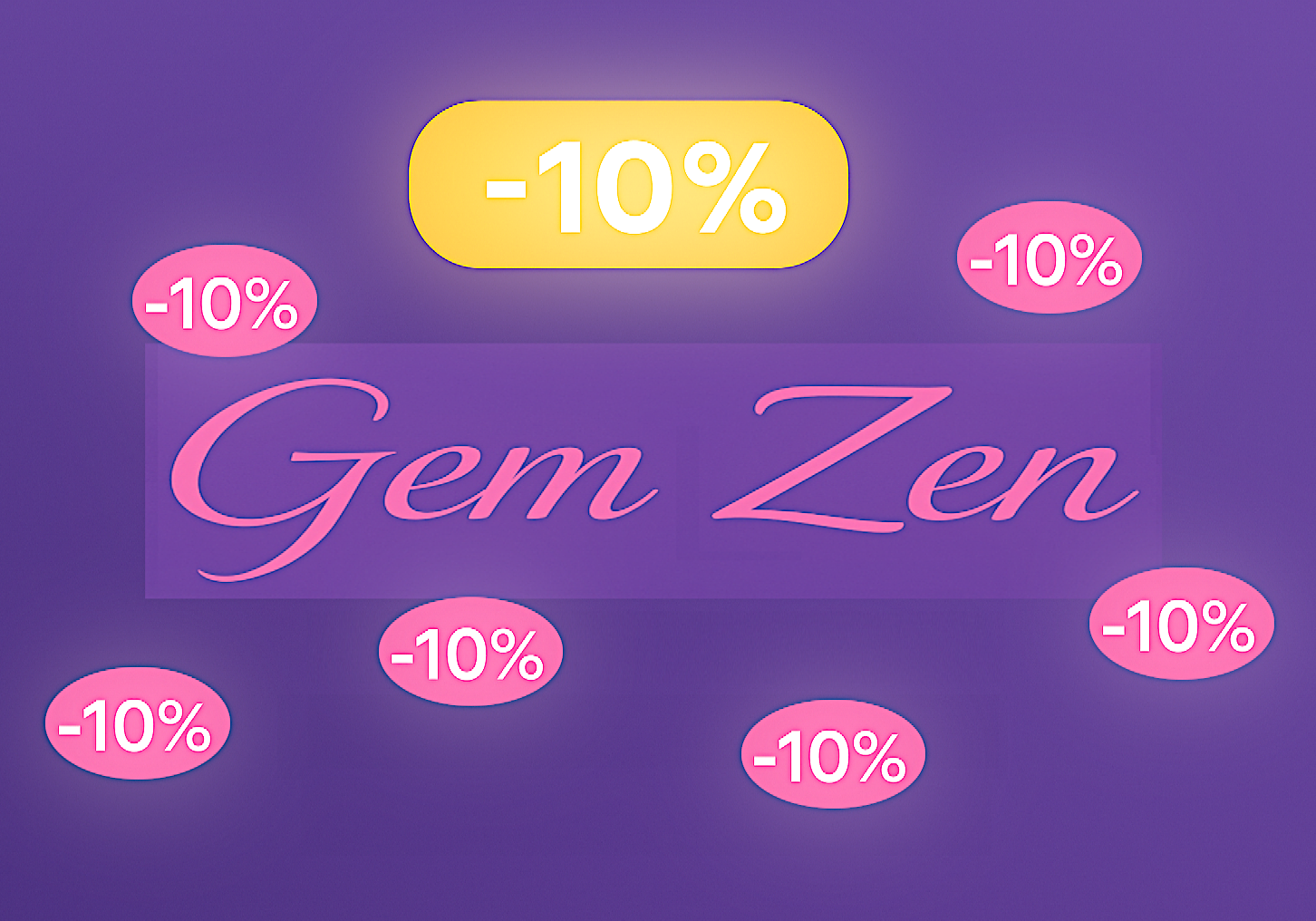Selection of brass Buddhas. Ø models from 13 to 20cm (your choice). Very high-quality sacred Buddhist deity!
Selection of brass Buddhas. Ø models from 13 to 20cm (your choice). Very high-quality sacred Buddhist deity!
Couldn't load pickup availability
About the product:
Detail code 17586:
Buddha Shakyamuni symbolizes the enlightened quality of mind, which all living beings can attain.
It symbolizes all the qualities one can think of, in perfect and pure expression. As a mental training, the deficiencies of human existence can be overcome, and what remains is the enlightened mind.
Anyone can achieve this state - Buddha Shakyamuni demonstrated this and passed it on to us. Thus, his image is very popular and is mainly used to remind us of these enlightened qualities and to develop them.
Detail code W9558:
This is the most popular type of Buddha in Japan. Amitabha is one of the three holy beings of the Western Paradise, along with Bodhisattva Mahasthamaprapta and Quan Yin (Avalokitesvara). Padmasambhava, an eighth-century Indian monk, brought Amitabha's practice to Tibet and Nepal. Amitabha Buddha of the Japanese tradition. This is the most popular Buddha in Japan. Amitabha is one of the five Dhyani Buddhas, symbolizing the wisdom of distinctive awareness and secret speech. His visualization color is red, and he is associated with the throat chakra. Amitabha's mantra is: Om Ah Amithaba Hum.
Detail code W9557:
Shakyamuni Buddha symbolizes the enlightened quality of mind, which all living beings can attain. He symbolizes all the qualities one can think of, in perfect and pure expression. Through mental training, the deficiencies of human existence can be overcome, and what remains is the enlightened mind. Anyone can achieve this state—Shakyamuni Buddha demonstrated this and passed it on to us. Thus, his image is very popular and is primarily used to remind us of these enlightened qualities and to develop them.
Detail code W9563:
Amithaba is one of the three holy beings of the Western Paradise, along with Bodhisattva Mahasthamaprapta and Quan Yin (Avalokitesvara). Padmasambhava, an eighth-century Indian monk, brought Amitabha's practice to Tibet and Nepal. Amitabha Buddha of the Japanese tradition. He is the most popular Buddha in Japan. Amithaba is one of the five Dhyani Buddhas, symbolizing the wisdom of distinctive awareness and secret speech. His visualization color is red, and he is associated with the throat chakra. Amithaba's mantra is: Om Ah Amithaba Hum.
Detail code W9668:
The Laughing Buddha is also called the "Big Belly Buddha." He is the Chinese Buddhist deity of wealth, prosperity, and happiness. The Chinese name is Pu-Thai-Ho-Shang. A laughing Buddha equals luck, joy, success, prosperity, and good fortune.
The Laughing Buddha is also known as Maitreya Buddha, or the Buddha of the Future. He is a symbol of good luck, kindness, and innocent joy. He is believed to bring good health and well-being, and was once the patron saint of goldsmiths in ancient China. His round belly is considered a physical symbol of luck and wealth. Rubbing his belly once a day increases your chances of good fortune.
Detail code W9876:
Akshobya Buddha is one of the five Dhyani Buddhas. His visualization color is blue and he is associated with the heart chakra. Akshobya symbolizes the transformation of anger and sadness into love and compassion. He is depicted making the earth-touching mudra, which represents stability. Akshobya Buddha's main qualities are love and maintaining a pure connection with the Guru (spiritual teacher). His mantra is Om Ah Akshobya Hum.
Detail code W9563/1:
This is the most popular type of Buddha in Japan. Amithaba is one of the three holy beings of the Western Paradise, along with Bodhisattva Mahasthamaprapta and Quan Yin (Avalokitesvara). Padmasambhava, an eighth-century Indian monk, brought Amitabha's practice to Tibet and Nepal. Amithaba is one of the five Dhyani Buddhas. He symbolizes concentration, contentment, and the wisdom of discernment. The visualization color is red, and he is related to the throat chakra. Amithaba's mantra is: Om Ah Amithaba Hum.
Share
